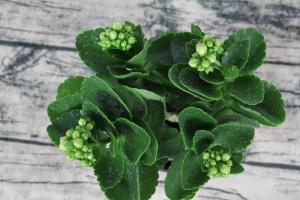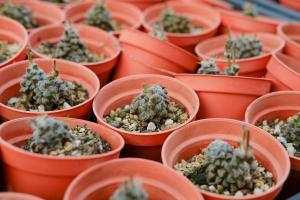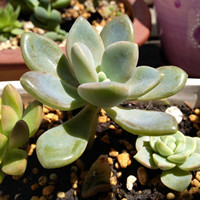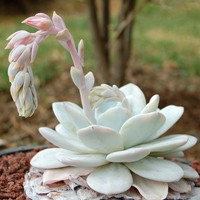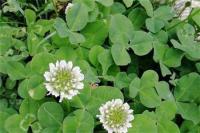
snake plant
The Snake Plant, also known as Mother-in-Law's Tongue or Sansevieria, is a popular houseplant known for its ability to thrive in a variety of conditions. It is native to West Africa and is known for its long, narrow leaves that are often variegated with shades of green, yellow, and white. Snake plants are low maintenance and are able to tolerate low light levels, making them a good choice for areas of the home that don't receive a lot of natural light. They are also known for their ability to purify the air by removing toxins such as formaldehyde, nitrogen oxides, and xylene. Snake plants are easy to care for and only need to be watered once the soil has dried out. They can be propagated by dividing the offsets that grow around the base of the plant, or by rooting leaf cuttings in water or soil.
how to propagate snake plant
There are two main ways to propagate Snake Plants: by dividing offsets or by rooting leaf cuttings. Here's how to do both:
Dividing offsets:
First, gently remove the plant from its pot and loosen the roots.
Look for small offsets, or baby plants, growing around the base of the main plant. These can be gently separated from the main plant using a sharp, sterile knife or scissors.
Plant the offsets in individual pots filled with well-draining soil. Water the soil and place the pots in a location with bright, indirect light.
Keep the soil consistently moist but not waterlogged. The offsets should begin to grow and establish themselves within a few weeks.
Rooting leaf cuttings:
Choose a healthy, non-flowering leaf from the Snake Plant. Using a sharp, sterile knife or scissors, carefully cut a 3-4 inch piece from the base of the leaf.
Fill a small pot with well-draining soil and moisten it.
Place the leaf cutting in the soil, making sure that the cut end is buried and the rest of the leaf is above the soil. You can also place the leaf cutting in a glass of water, making sure the cut end is submerged.
Place the pot in a location with bright, indirect light and keep the soil consistently moist. After a few weeks, roots should begin to grow. Once the roots are established, you can transplant the cutting into a larger pot.
It's important to use a sharp, sterile knife or scissors to avoid damaging the plant and to prevent the spread of any diseases. It's also important to use well-draining soil and not to over-water the plant, as this can lead to rot.
are snake plants toxic to cats
While Snake Plants (Sansevieria) are not toxic to cats, it is possible that your cat may experience some digestive upset if it consumes large amounts of the plant. It is always a good idea to keep houseplants out of reach of pets to prevent accidental ingestion. If you are concerned that your cat may have ingested a Snake Plant or any other houseplant, it is important to monitor your cat's behavior and contact your veterinarian if you notice any changes in appetite, vomiting, or diarrhea. It is also a good idea to have the name of the plant and any symptoms your cat is experiencing on hand when you call your veterinarian.
how often to water snake plant
Snake Plants (Sansevieria) are known for their low-maintenance nature and their ability to tolerate a wide range of conditions. When it comes to watering, it is important to allow the soil to dry out between waterings to prevent over-watering, which can lead to root rot. In general, Snake Plants should be watered about once a week or every 7-10 days. However, the exact watering frequency will depend on a variety of factors such as the size and type of pot, the type of soil, the temperature and humidity of the environment, and the amount of light the plant is receiving.
To determine whether your Snake Plant needs water, stick your finger about an inch into the soil. If the soil feels dry at that depth, it's time to water the plant. If the soil is still moist, wait a few more days before watering. It's also a good idea to use a moisture meter or a soil probe to help you determine the moisture level of the soil.
It's important to water Snake Plants thoroughly, but not to the point of excess. Be sure to pour enough water so that it reaches the roots, but allow the excess water to drain away to prevent the soil from becoming waterlogged. If the soil becomes waterlogged, the roots may rot, leading to the eventual death of the plant.
how to care for snake plant
Snake Plants (Sansevieria) are popular houseplants known for their low-maintenance nature and ability to thrive in a variety of conditions. Here are some tips for caring for your Snake Plant:
Light: Snake Plants can tolerate low light levels, making them a good choice for areas of the home that don't receive a lot of natural light. However, they will grow best in bright, indirect light. Avoid placing the plant in direct sunlight, as this can cause the leaves to yellow and the plant to become stressed.
Water: Allow the soil to dry out between waterings to prevent over-watering, which can lead to root rot. In general, Snake Plants should be watered about once a week or every 7-10 days. Use a moisture meter or soil probe to help you determine the moisture level of the soil. When you do water the plant, be sure to water it thoroughly, but not to the point of excess.
Soil: Snake Plants prefer well-draining soil that is slightly on the dry side. A cactus or succulent soil mix or a mix of potting soil and perlite or sand works well. Avoid using soil that is too heavy or holds too much moisture, as this can lead to root rot.
Fertilizer: Snake Plants do not require a lot of fertilization and can thrive without it. However, if you do choose to fertilize your plant, use a balanced liquid fertilize once a month during the growing season (spring and summer). Avoid fertilizing during the winter months, when the plant is in a dormant state.
Pests: Snake Plants are generally resistant to pests, but they can occasionally be affected by mealybugs, aphids, and spider mites. If you notice any pests on your plant, try using a natural pest control method such as neem oil or horticultural oil to get rid of them.
By following these care tips, your Snake Plant should thrive and bring a touch of greenery to your home.
are snake plants toxic to dogs
Snake Plants (Sansevieria) are not toxic to dogs. According to the ASPCA's Animal Poison Control Center, Snake Plants are not listed as toxic to dogs. However, if your dog consumes a large amount of the plant, it is possible that it may experience some digestive upset. It is always a good idea to keep houseplants out of reach of pets to prevent accidental ingestion. If you are concerned that your dog may have ingested a Snake Plant or any other houseplant, it is important to monitor your dog's behavior and contact your veterinarian if you notice any changes in appetite, vomiting, or diarrhea. It is also a good idea to have the name of the plant and any symptoms your dog is experiencing on hand when you call your veterinarian.

 jackfruit
jackfruit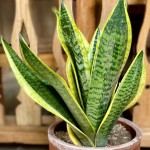 snake plant
snake plant hibiscus
hibiscus hydrangea
hydrangea lavender
lavender Green roses climb al...
Green roses climb al... If you don't pay att...
If you don't pay att... Management of four g...
Management of four g...



